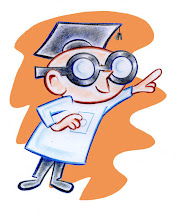B. S. Chorus
I find I can't stop paging through the thing, even though I don't yet understand the notation defining each step.
First, it seems authoritative. It was written by a guy named Mark Knowles, who learned the steps from his teacher Louis DaPron, who learned the steps from Fred Astaire and Bill Robinson (familiar to more people under his stage name, Mr. Bojangles). Wow!
Second, it gives the oddest glimpses into a time and culture that seems wholly separate from our own, yet still exerts a startling amount of cultural influence. When I tap dance each week with a room full of white-collar professionals, it never occurs to me that we are struggling to learn an art form invented by plantation slaves.
From here forward, I'll occasionally drop a random entry from The Tap Dance Dictionary, by Mark Knowles, into this blog. Here are a couple to get us started. Mr. Knowles authored all the remaining text in this entry.
B.S. Chorus: A traditional vaudeville routine performed by a chorus which combined tap and non-tap and was generally used as a background for tap soloists. The dance earned its name from the relative simplicity of the steps, although naive chorines were told the letters B.S. stood for Boy Scout. Created for a very specific purpose -- to facilitate the use of local talent when vaudeville headliners wanted to add dancers to their acts -- the B.S. Chorus was learned by dancers all over the United States in the 1920s and 1930s. It was kept fairly simple so that chorines could at least fake it, even if they were not terribly accomplished as tap dancers. The dance was made up of the standard thirty-two bars and divided into four sections with eight bars apiece. These four sections generally consisted of:
- Eight bars of the Time-Step.
- Eight bars of the Crossover.
- Eight bars of the Buck and Wing.
- Four bars of Over the Top and four of Through the Trenches, and a finish.
Cut His Mouth Out: In a dance competition, to "best" someone so completely that he or she is left speechless in defeat.
Jim Crow: The stage name of Thomas Dartmouth Rice, also known as Daddy "Jim Crow" Rice. A minstrel performer, Rice gained enormous popularity by introducing a parody dance into his act in Louisville, Kentucky, in the early 1800s. Performing in black-face, and dancing to an African-American work song, he mimicked the movements of a crippled slave named Jim Crow whom he had seen working in the livery stable behind the theater. The dance, which consisted of limping, shuffling and jigging movements, ended with a little jump at the end of each refrain. When Rice first introduced the dance, it was wildly received and brought him twenty curtain calls. The dance and accompanying song turned Rice into the highest paid minstrel performer around, and soon he was presenting the dance internationally with similar success. The song that accompanied the dance was even translated into Hindu. The dance became known as the Jumping Jim Crow, and grew into a popular social dance and a national dance craze of the early 1800s. One particular movement in the dance, which consisted of swaying the hips with one arm waving and wagging the finger, is thought to have later developed into the social dance Truckin'.
The mimicking of African-American dances and the use of African-American music as source material not only had a profound influence on the development of minstrel entertainment and tap dancing, but also had a lasting influence on the development of music and theater in general. Stephen Foster saw Rice perform this dance and was said to have been greatly influenced by it in the writing of his songs "Camptown Races" and "Old Folks at Home." The dance's popularity also meant that Rice's particular caricature was also extremely influential in establishing the way that African-Americans were subsequently presented in theater pieces. The cliche of the "dancing darkey" grinning from ear to ear became a fixture of both nineteenth century literature and popular entertainments, creating powerful negative stereotypes that were not challenged until the advent of such dancers as Bill Robinson and John Bubbles. ##



2 Comments:
Apparently you haven't seen the Gallileo Players, a Chicago group that uses skits, song and dance to portray various concepts of science. I saw them perform a review featuring a selection of transition elements from the periodic table. It was surprisingly entertaining and informative.
Hi there fellow student,
For the first time ever,I just read your blog. It really describes the dance studio experience,like no other writing I've ever seen.
I am a former Louis DaPron dancer. He was a great mentor to me,helping me gain insight,not only into dance(tap specifically),but insight into life itself!
Louis was a great choreographer,a celebrity in the world of dance,but he was also a dance studio owner and operator during the last years of his life. It was really tough sometimes,but he made it appear easy(with the help of his co-owner/instructor Jean Reese).
I,like many of his students,became a professional dancer. I was lucky to have experienced the rare honor of getting to work with Louis professionally as one of his "Louis DaPron Dancers'...great fun.
I'm thankful to you for writing such a(sometimes hilarious)blog on the subject of dance studios,and specifically your descriptions of tap class and practice between lessons. For me,anyway,it really captures the life of a dance student,from the beginner all the way to the seasoned professional('cause God knows we all continue to be students,...wanting to learn even more).
I don't know how long ago you began your blog about dance,but I hope it's current and that you continue the story,with or without the so necessary recitals.
sincerely,
Rheba
Post a Comment
<< Home